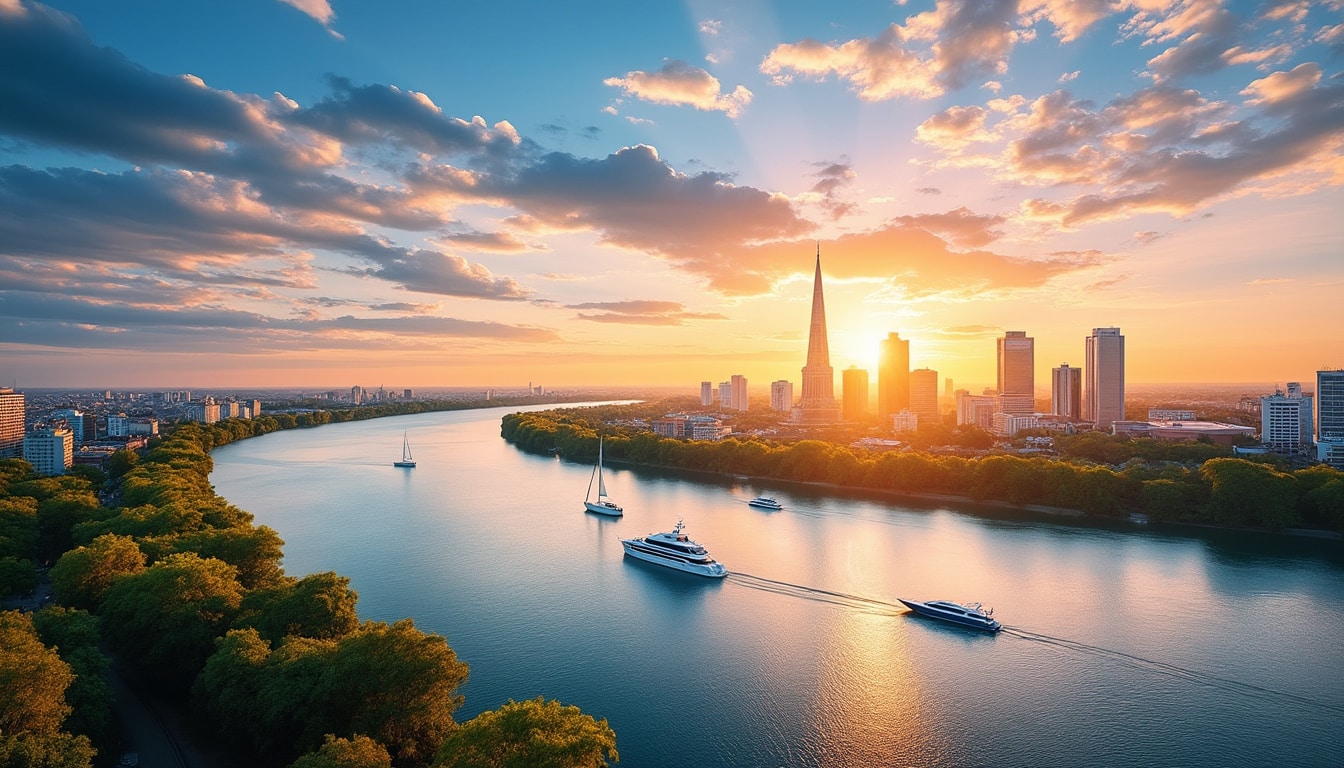Buenos Aires is a city rich with both cultural and natural wonders. Among its most intriguing features are the majestic rivers and water bodies that surround it. They play a crucial role in shaping the lifestyle, ecology, and even the economy of the region. This exploration delves into the diverse aquatic environments near Buenos Aires, highlighting the significance of these waterways and the unique experiences they offer both locals and tourists.
The Importance of Rivers in Buenos Aires’ History and Development
The founding of Buenos Aires in 1580 by Juan de Garay marked the beginning of its relationship with rivers and waterways. Initially established as a port city, it quickly became an economic powerhouse, largely due to its strategic position along major water routes. Not surprisingly, the waterways influenced the city’s layout and accessibility, fostering trade and commerce with Europe and other parts of South America.
Over the centuries, the role of rivers and water has transformed. While previously the city seemed to turn its back on these natural resources due to urbanization, modern efforts have focused on reintegrating these elements into city life, enhancing both environmental quality and recreational opportunities. For example, areas like Costanera Sur, once bustling with swimming and social activity, are now rejuvenated as ecological parks and scenic walkways, connecting city dwellers back to nature.
What we see today is a blend of old and new: historic docks now house trendy restaurants and bars, while untouched wetlands provide a sanctuary for rare flora and fauna. Thus, rivers remain a symbol of life and continuity, a testament to the city’s enduring legacy.
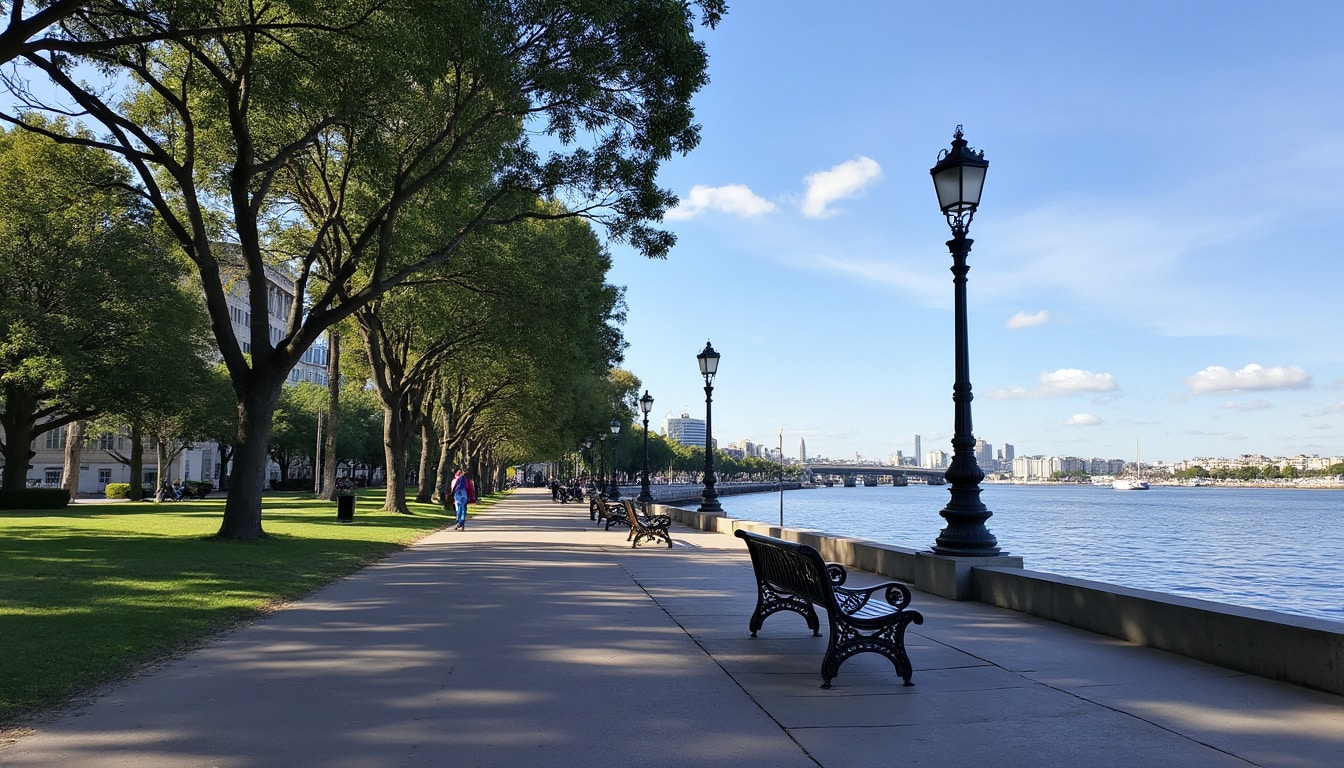
The Ecological Significance of Buenos Aires’ Waterways
Rivers, including the remarkable Río de la Plata, are more than just sources of water and transport routes; they are vital ecosystems that support a vast array of biodiversity. The Río de la Plata, in particular, is an estuary formed by the confluence of the Uruguay and Paraná rivers, and is critical for local wildlife.
Several initiatives are underway to preserve and protect the delicate ecosystems that thrive around Buenos Aires. Areas like the Paraná Delta, which forms a network of rivers, streams, and islands, are now recognized as biosphere reserves. These efforts are crucial for maintaining the ecological balance and ensuring that future generations continue to enjoy the natural beauty and diversity.
Discovering the Paraná River Delta: A Natural Wonder
The Paraná River Delta is one of South America’s most stunning natural landscapes and a crucial component of the region’s hydrological system. This vast delta is dotted with islands, each offering a unique experience of outdoor adventure and tranquility.
To truly appreciate the beauty of the Delta, it is essential to explore its waters. Boats and catamarans provide numerous excursions, allowing you to navigate through the labyrinth of waterways, observe the diverse ecosystems, and experience the rhythm of island life. The options range from day trips to longer stays, where accommodations such as rustic cabins and modern lodges blend into the lush backdrop.
- 🚣♂️ Wakeboarding and rowing for the adventurous
- 🏕 Camping and rustic lodging for the nature lover
- 🛥 Boat excursions showcasing the Delta’s unique ecosystems
Moreover, sites like Talavera Island and the town of Otamendi offer additional opportunities for camping and exploration. These areas are not only recreational venues but also educational ones, teaching visitors about the importance of conservation and sustainable tourism practices.
| Location | Activity | Best Time to Visit |
|---|---|---|
| Talavera Island | Fishing and camping | October to March |
| Otamendi | Hiking and wildlife tours | October to March |
| Paraná Delta | Boat tours and eco-lodges | Year-round |
How to Access the Delta’s Rich Offerings
Reaching the Paraná Delta is a straightforward and rewarding journey. Most visitors commence their adventure from the port of Tigre, accessible by public transport options, including buses and trains. From there, numerous passenger boats and private charters whisk travelers away to discover the serenity and majesty of this natural wonder.
Recreational Activities and Sustainable Tourism in Buenos Aires
Rivers near Buenos Aires are not just geographical features but active sites for recreation and tourism, key components of the local lifestyle and economy. From the vibrant shores of the Rio de la Plata to the winding courses of the Paraná River, there’s a diverse range of activities for every type of traveler.
Whether it’s the thrill of water sports or the peace of birdwatching, the options are as varied as they are engaging. Eco-conscious tourism is on the rise, with emphasis on activities that respect the natural habitats and contribute positively to local conservation efforts.
- 🛶 Kayaking through serene backwaters
- 🐦 Birdwatching at nearby reserves
- 🚴♀️ Biking along riverfront paths
The Buenos Aires Waters initiative has been instrumental in promoting sustainable tourism practices, ensuring that the recreational use of these water bodies contributes to both the local economy and the environment. This balance creates a harmony that is both beneficial and necessary for the long-term enjoyment of these natural resources.
The Future of River Tourism in Buenos Aires
The vision for the future embraces sustainable practices while enhancing visitor experience. With projects underway to improve infrastructure without compromising the environment, Buenos Aires aims to emerge as a leader in eco-tourism. Investments in technology and services aim to make attractions more accessible while promoting awareness about environmental protection.
Cultural and Social Aspects of River Life
The rivers of Buenos Aires have always been a central part of its cultural identity. Historically, these waterways fashioned the social and economic fabric of the city, shaping traditions that continue to thrive.
Community events, cultural festivals, and traditional celebrations often revolve around rivers. The annual Tango Festival, for instance, includes performances and dances along the scenic riverbanks, intertwining the cultural heartbeat of Buenos Aires with these natural settings.
- 💃 Annual Tango Festival
- 🎨 Art exhibitions and river fairs
- 🎶 Riverbank concerts and open-air performances
Furthermore, community-driven initiatives encourage locals to engage with their riverfront heritage, emphasizing the importance of maintaining and celebrating the rivers. These efforts cultivate a sense of pride and responsibility, ensuring that the legacy of Buenos Aires’ waterways will continue to be cherished by future generations.
| Event | Location | Month |
|---|---|---|
| Tango Festival | Costanera Norte | August |
| River Art Fair | Tigre | October |
| Music by the Water | Puerto Madero | March |
The Future of Buenos Aires’ Waterways
As we look to the future, the relationship between Buenos Aires and its rivers continues to evolve. Sustainability is paramount, guiding efforts to protect these waterways while enhancing their recreational and cultural offerings. Initiatives like the Delta Dreams and Waterway Wonders are paving the way for innovative experiences, promoting river-centric tourism while ensuring ecological preservation.
FAQ: Navigating Buenos Aires’ Waterways
- What is the best time to visit the Paraná Delta? The ideal time is from October to March, when the weather is favorable for water activities.
- Are there guided tours available for exploring the river? Yes, numerous guided tours and boat excursions are available, offering educational insights and unique experiences.
- What are the sustainable tourism practices in place? Practices include minimizing waste, reducing emissions, and promoting biodiversity conservation.
Buenos Aires’ majestic rivers and their surrounding landscapes offer a plethora of opportunities for discovery, enjoyment, and enrichment. As we cherish and protect these waterways, they continue to enrich the cultural and natural life of the city, promising an exciting future for all who choose to explore them.
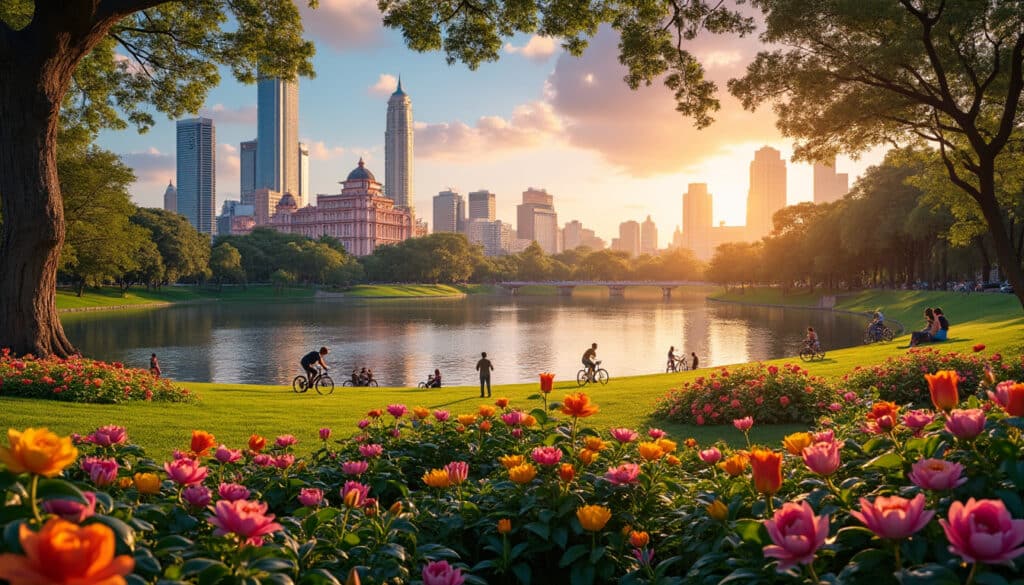
Nature and Geography of Buenos Aires
Buenos Aires, the vibrant capital of Argentina, is a city that beautifully melds urban appeal with natural beauty. Nestled on the banks of the Río de la Plata, Buenos Aires offers a unique blend of geography that plays a vital…
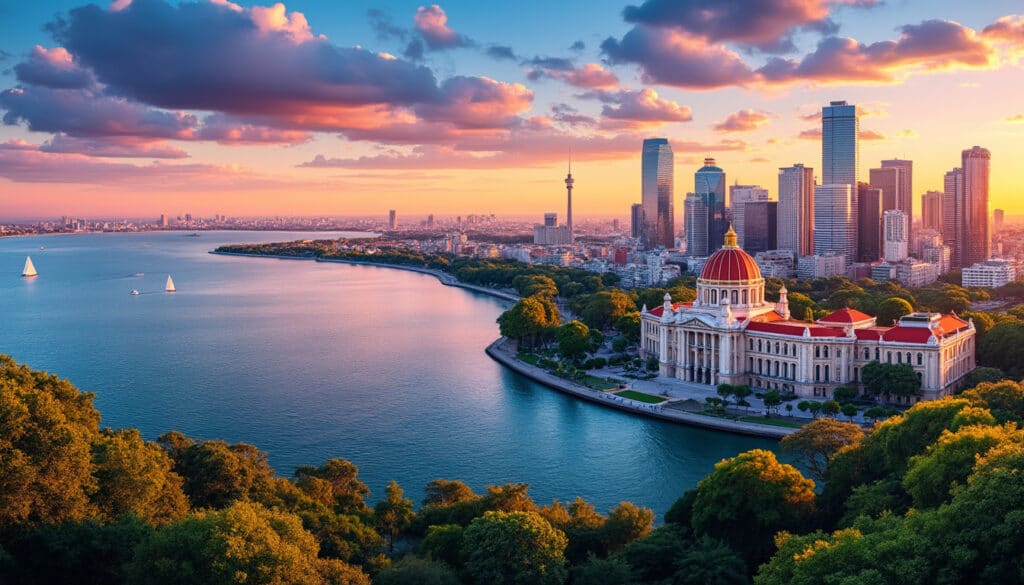
Geographical features of Buenos Aires
Buenos Aires, often regarded as the “Paris of South America,” is a city that harmoniously blends natural beauty with cultural richness. Nestled along the Río de la Plata, this vibrant metropolis offers a unique tapestry of geographical features that have…
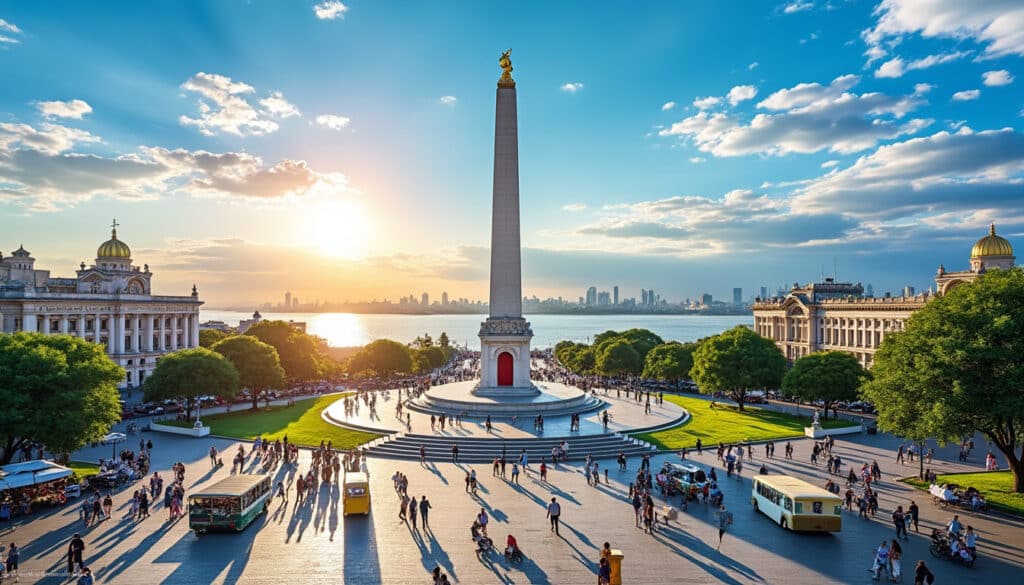
Location and coordinates of Buenos Aires
Buenos Aires, the cosmopolitan capital of Argentina, stands as a beacon of culture and history in South America. Known for its rich heritage, vibrant street life, and passionate tango scene, this sprawling city captures the hearts of locals and tourists…
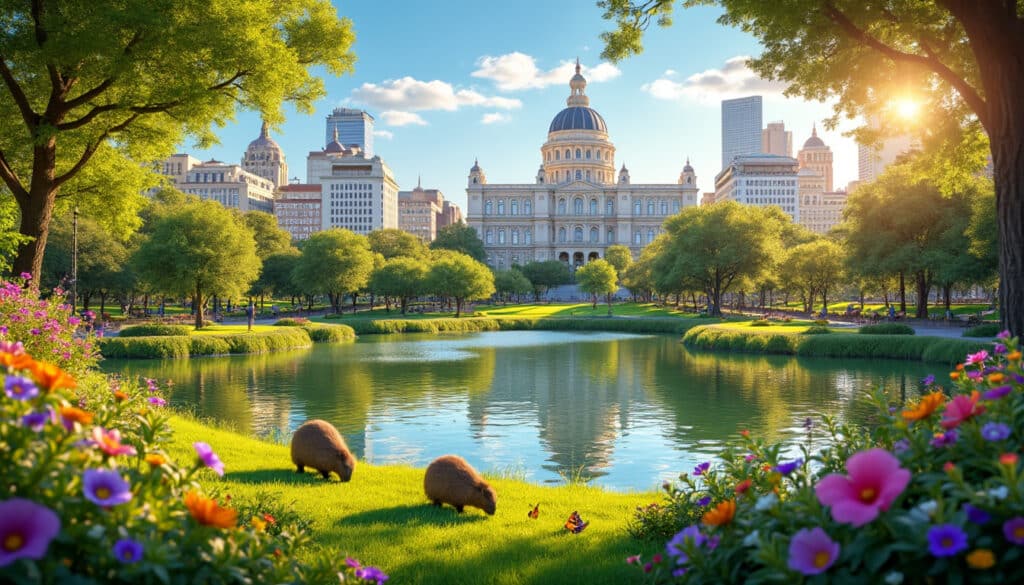
Nature and wildlife in Buenos Aires
With its reputation as a bustling metropolis rich in culture and urban life, Buenos Aires is often seen as a city teeming with tango rhythms and cosmopolitan vibrancy. However, nestled within this urban sprawl is a surprising abundance of nature…

